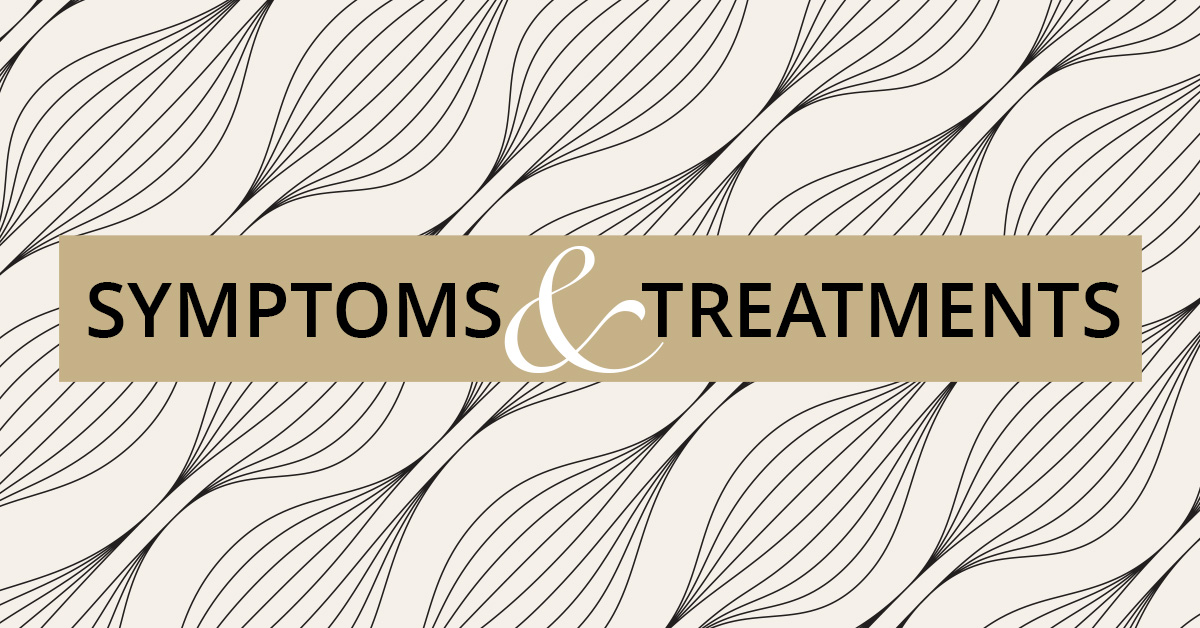It’s the middle of the day and you’re on your back with the blinds closed, a wet washcloth over your eyes, and a nauseated feeling in the pit of your stomach. What’s that got to do with perimenopause? In a word: hormones.
About 13 percent of adults in the United States suffer from migraines—that’s 35 million people, according to Susan Hutchinson, M.D., director of the Orange County Migraine & Headache Center in Irvine, California. It turns out, 27 million of those migraine sufferers are of the fairer sex. While migraines are about equally prevalent in boys and girls, after puberty, the ratio of migraine occurrence tips to 3:1, with the ladies losing out big time, Dr. Hutchinson says. In fact, girls are more likely to have their first migraine during the year of their first period than at any other time in their lives, according to the Migraine Research Foundation. Why? Again, hormones.

Migraines, unlike other headaches, are often hormonal in nature, so intense fluctuations of hormones (especially estrogen!) in women can egg on and worsen migraines, she says. What’s more, when going through “the change,” many women report elevated levels of stress. Between hot flashes, mood swings, and flat-out life as you know it, how could you not suffer perimenopausal stress? Of course, that stress can further exacerbate migraine symptoms, according to Dr. Hutchinson.
For women, migraines are often marked by throbbing pain that’s worse on one side of the head, nausea, vomiting, and sensitivity to light and noise. For those women who have migraines with aura, those symptoms are often prefaced by seeing flashing lights and floating lines, developing temporary peripheral blindness, experiencing numbness or tingling in the face or hands, suffering a distorted sense of smell, taste, or touch, and experiencing mental confusion.
While migraines typically last for anywhere from four to 72 hours, when shifting hormones are to blame, they tend to run the long side, notes Dr. Hutchinson. “My speculation is that, often, the underlying hormonal trigger continues to be present unlike, for example, a migraine caused by a food trigger that is ingested, causes a migraine, and then is no longer ingested so the trigger does not continue to be present,” she says.
The silver lining is that two-thirds of female migraine sufferers completely ditch their migraines or notice marked improvement when they enter menopause, a time in which hormones finally stop fluctuating. In fact, after age 60, only 5 percent of women suffer migraines, according to the Migraine Research Foundation.
Still, the problem for many women is getting through the hell of perimenopausal migraines to the bright light of menopause.
Not anymore! Put the pain in the past and get your life back with these three tips perimenopausal migraine-relief tips from Dr. Hutchinson:
Find a Specialist
As with most things medical, visiting a trained specialist is a solid first step. Your perimenopause and menopause specialist can evaluate your migraines in relation to your hormonal status and adjust hormone therapy if necessary, says Dr. Hutchinson, who notes the importance of also finding a good headache and migraine specialist who is versed in how fluctuating hormone levels affect migraines. Your best bet? Ask your perimenopause and menopause specialist for a referral or look for local M.D.s on headaches.org or achenet.org, she says.
Consider Non-Oral Bio-Identical HT (Hormone Therapy)
Whether you are on hormone therapy or are just thinking about taking the plunge, talk to your perimenopause and menopause specialist about how HT can influence perimenopausal migraines—both for good and for bad. Remember: “All forms of HT are not created equal,” Dr. Hutchinson says. “If HT is used, the general consensus in the ‘headache world’ is to use a non-oral delivery system such as the estradiol transdermal patch and oral progesterone. Especially in a woman with a migraine with an aura.I like “bio-identical” meaning that the estrogen and progesterone would have the same chemical structure as a woman’s own ovaries and would be more likely to help a migraine than hurt. Once HT is started I would advise the woman to watch the pattern of her headaches and aura carefully and report any marked increase to her treating provider.
On a synthetic, oral pill? It might actually be worsening your migraines! “Oral preparations have more variability in absorption and blood levels and therefore would be predicted to not be as helpful in treating/preventing menopausal migraine. Synthetic and oral preparations are more likely to cause or aggravate a headache,” Dr. Hutchinson says.
Fight Your Triggers
Apart from hormone fluctuations, bright or flashing lights, a lack of food or sleep, and stress can all contribute to migraines. Your best defense is good self-care. Dr. Hutchinson advises eating small, frequent meals throughout the day that pack both complex carbohydrates (think: whole grains, legumes, and starchy vegetables) and protein to regulate blood sugar levels. Dietary supplements including butterbur, B-2 (riboflavin), coenzyme Q-10, and magnesium can also be helpful in migraine prevention, according to Dr. Hutchinson. Make sure to drink plenty of water, as dehydration can cause headaches. Remember: if you feel “thirsty,” you are already dehydrated, according to the National Health Service. Getting a full night’s sleep and exercising regularly (which can help you sleep better!), can also help. Last but not least, don’t smoke! You also might want to cut back on the caffeine and booze, she says.
Don’t let perimenopause be a pain—figuratively or literally! A happy head is vital to being the productive and fulfilled women that we are destined to be.
Remember: Reaching out is IN! Suffering in silence is OUT!
For more great tips on how to find a menopause specialist and deal with menopause, download my free eBook: MENOPAUSE MONDAYS the Girlfriend’s Guide to Surviving and Thriving During Perimenopause and Menopause.
Be sure to sign up for my fun YouTube Videos!





